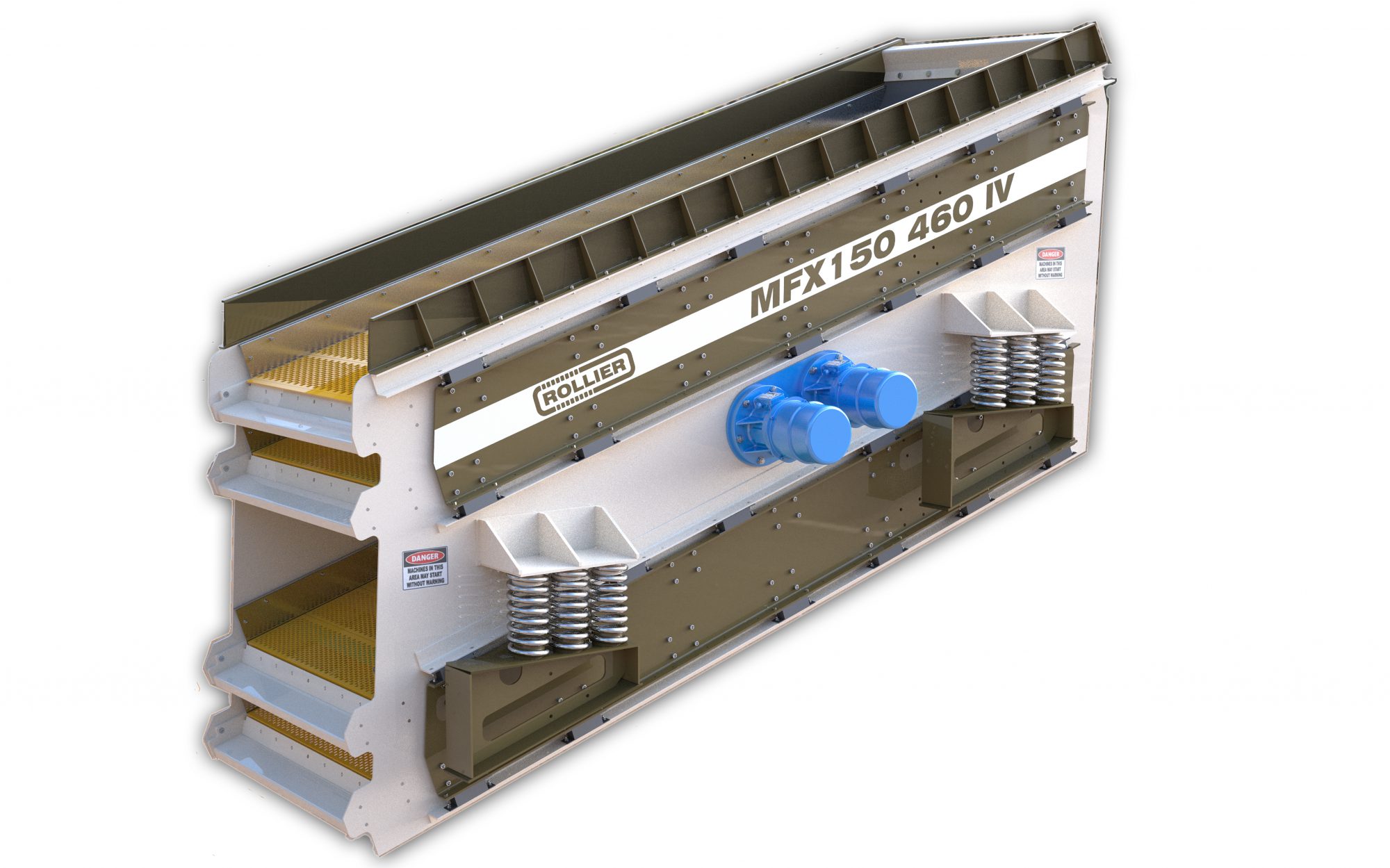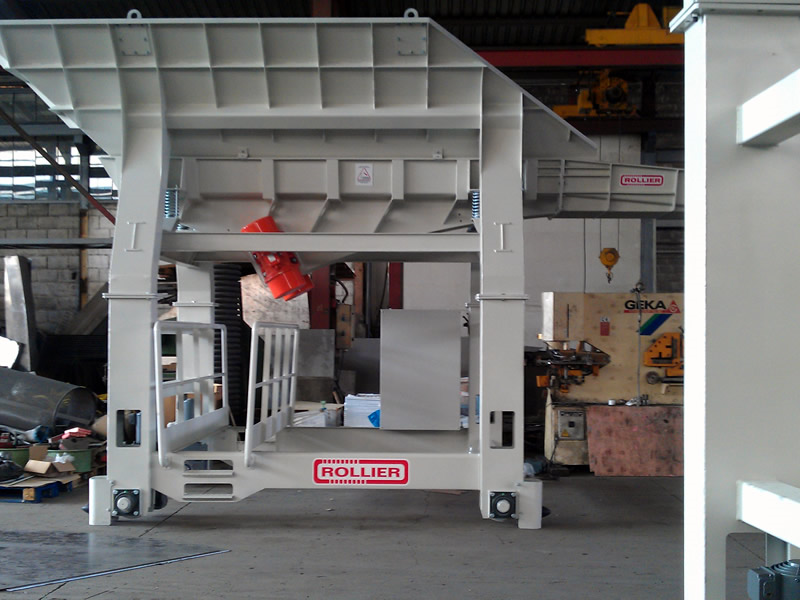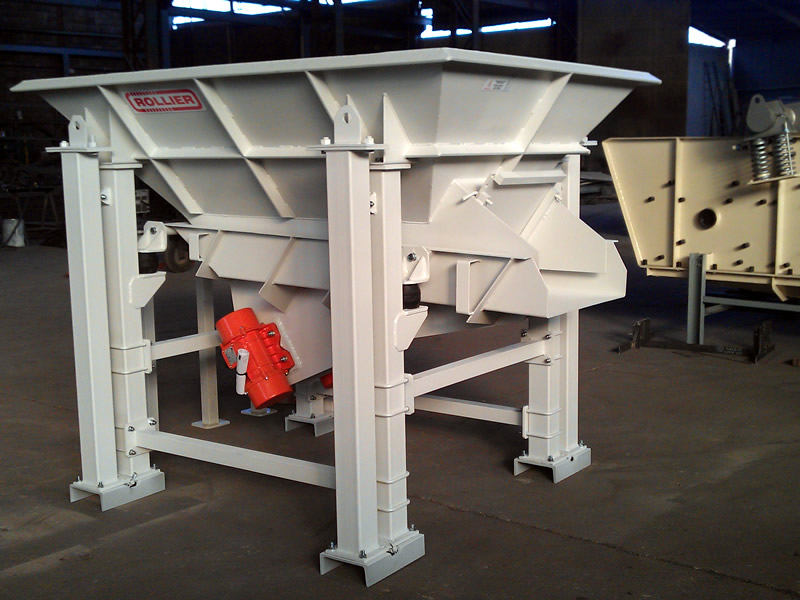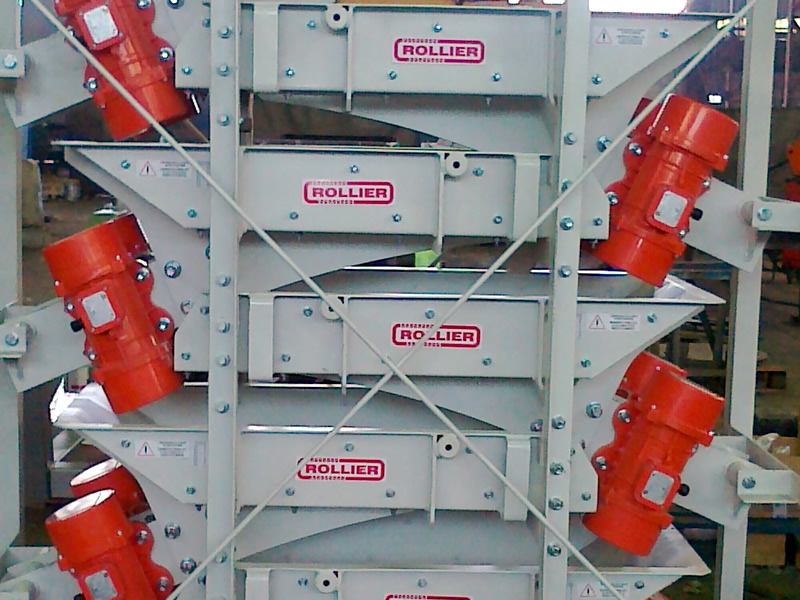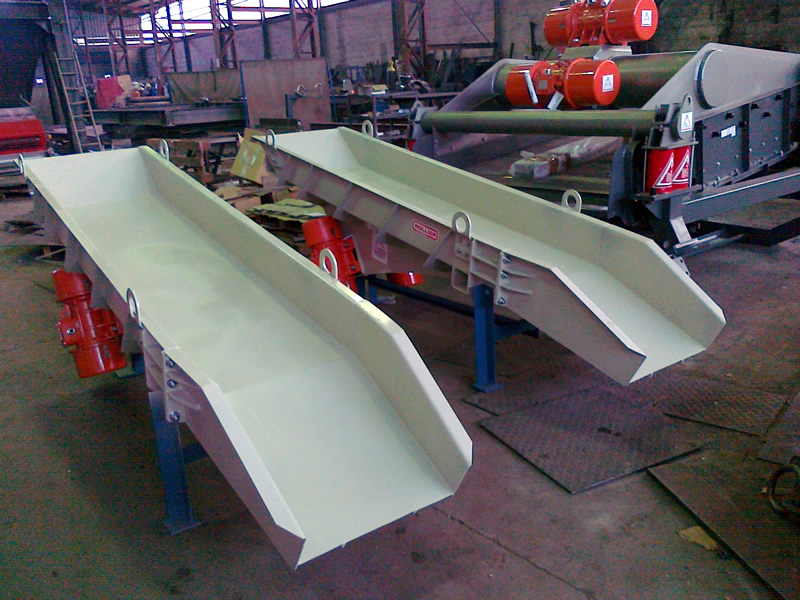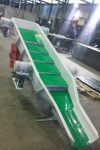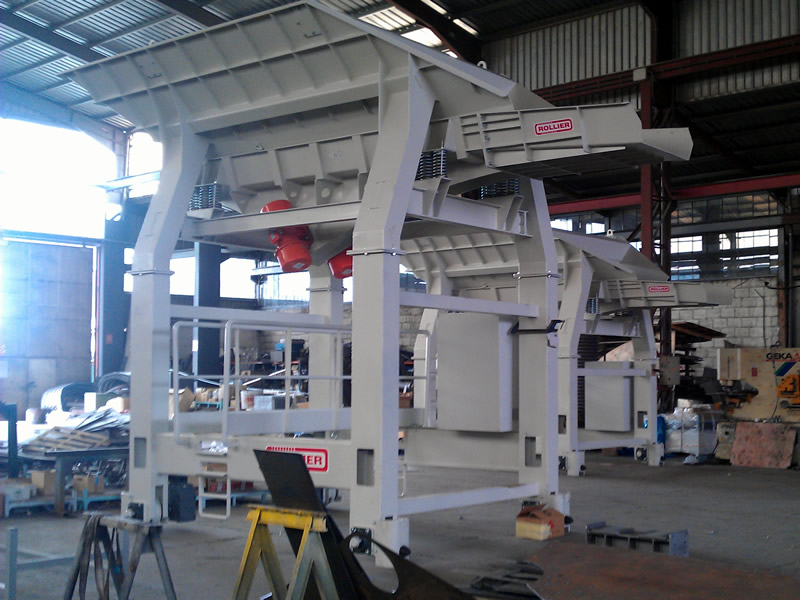Main features of the Rollier ML series vibrating feeders.
Rollier ML series vibrating feeders are trays powered by vibrating motors. THe vibrating tray is useful in spreading out material to feed a screener, sizer, crusher, shredder, dryer, or other process equipment.
Rollier ML series vibrating feeders are used to transport and dispense any type of bulk materials.
Depending on the material to be transported, this tray can be lined with the following coatings:
- Anti-wear plate, for use in quarries with hard stones – Hardox
- Non-slip polyethylene
- High density polyethylene
- Polyurethane
- Rubber or rubber metal sheet
- Ceramic lining with high anti-wear characteristics.
- Teflon
- Stainless Steel
Advantages
- Robust and simple design
- Compact implementation by springs, silent blocks or Rosta suspension systems
- They may be suspended or supported
- No maintenance
- Low power consumption
Rollier series ML vibrating feeders can be made with a closed system in tréllex rubber or similar.
Electromechanical drive powered by two electrical vibrators, which are usually installed below the hopper to feed, transport, extract and dispense bulk products. They are fitted with a static hopper spout to prevent the material from gravitating on the tray. The hopper spout measurements are included in the hopper installation plan. The hopper spout can be ordered with different blade or bar closures, load guides and airtight covers with elastic seals.
Shutdown flow can be adjusted, modifying the mass eccentricity of the motor vibrators, which are equipped with a continuous scale dial. When the equipment is loaded, this adjustment is carried out using latest generation frequency variators, which can incorporate a braking system to halt feeding immediately. By combining both adjustment options it is possible to achieve a flow range of 0 – 100%. Low maintenance (periodic lubrication of the motor vibrator bearings). CE Marking. See video here.
- Compression steel springs
- Tensile steel springs
- Rubber anti-vibration protections
- AG type articulated mounts
In all cases, insulation is optimised, reducing as much as possible any transmissions and noise caused by the vibrations.
| Model | Width (mm) | Length (mm) | Weight (kg) | Production (t/h)** | Production (m3/h) |
|---|---|---|---|---|---|
| ML 30 65 | 300 | 650 | 65 – 75* | 25 – 22* | 15 – 13* |
| ML 40 80 | 400 | 800 | 130 – 150* | 112 – 91* | 70 – 57* |
| ML 50 90 | 500 | 900 | 150 – 160* | 134 – 106* | 84 – 66* |
| ML 60 100 | 600 | 1000 | 220 – 255* | 268 – 260* | 167 – 162* |
| ML 70 120 | 700 | 1200 | 240 – 280* | 348 – 319* | 217 – 199* |
| ML 80 130 | 800 | 1300 | 280 – 330* | 389 – 302* | 243 – 189* |
| ML 90 145 | 900 | 1450 | 370 – 440* | 448 – 351* | 280 – 219* |
| ML 100 160 | 1000 | 1600 | 460 – 540* | 515 – 434* | 322 – 271* |
| ML 110 175 | 1100 | 1750 | 630 – 720* | 649 – 526* | 405 – 329* |
| ML 120 190 | 1200 | 1900 | 660 – 760* | 899 – 665* | 562 – 416* |
| ML 135 205 | 1350 | 2050 | 850 – 975* | 922 – 717* | 576 – 448* |
| ML 150 235 | 1500 | 2350 | 1120 – 1280* | 1013 – 711* | 633 – 444* |
| ML 180 280 | 1800 | 2800 | 1800 – 2040* | 1359 – 951* | 843 – 594* |
